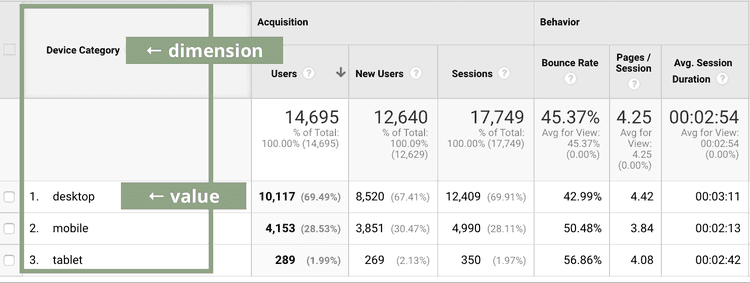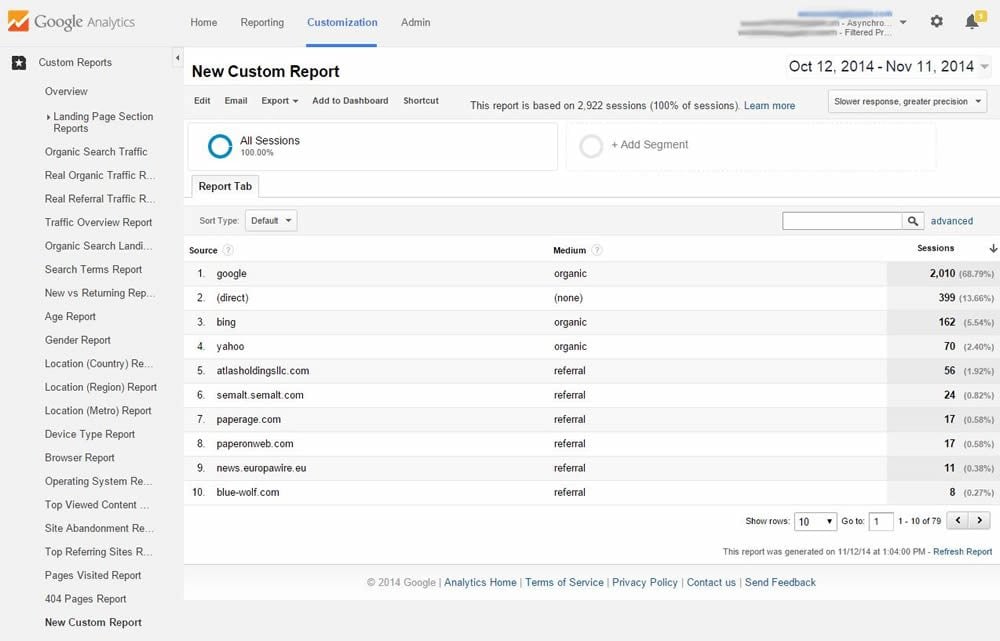Gain In-depth Point Of Views With Additional Measurement in Google Analytics
Second measurements in Google Analytics act as an effective tool for enhancing the deepness of understandings acquired from data analysis. Remain tuned to find exactly how additional dimensions can transform your data evaluation and drive notified decision-making in the digital world.
Understanding Second Measurements in GA
Second measurements enable individuals to delve deeper into their information by adding an extra layer of details to the primary information being evaluated. By incorporating secondary measurements, individuals can segment and compare data throughout different measurements, such as web traffic sources, customer gadgets, geographical areas, and more.
Recognizing exactly how to effectively use additional measurements in Google Analytics is vital for removing important understandings from the information collected. By choosing the ideal secondary dimensions to complement main metrics, customers can reveal patterns, fads, and relationships that may have otherwise gone unnoticed. This deeper level of analysis can cause even more enlightened decision-making and the optimization of electronic marketing methods to improve total efficiency.
Benefits of Using Additional Dimensions
Checking out the benefits intrinsic in leveraging additional dimensions within Google Analytics lights up the depth of insights readily available for improving information analysis. By including additional measurements, users can gain an extra extensive understanding of their primary information metrics.
In addition, second measurements allow individuals to compare and contrast different information points within the very same report, providing a more alternative view of internet site efficiency. This relative analysis can clarify the efficiency of advertising projects, material engagement, or individual demographics. Additionally, making use of additional measurements can aid in recognizing outliers or anomalies that might require more investigation.
Basically, leveraging additional measurements in Google Analytics supplies a powerful device for extracting beneficial insights and enhancing data-driven decision-making processes.
Implementing Additional Dimensions Efficiently
To properly execute second dimensions in Google Analytics, strategizing the option and application of these additional data layers is vital for maximizing the depth of insights stemmed from analytics records. When choosing second measurements, think about the particular goals of your evaluation to make sure the chosen measurements align with the information required to answer relevant concerns. It's vital to focus on significance over amount, selecting dimensions that enhance the main measurement and give meaningful context.
Applying additional dimensions successfully involves using them to uncover patterns, fads, and relationships that may not be noticeable when assessing data entirely based on the key dimension. By integrating secondary dimensions thoughtfully, you can enhance the granularity of your analysis and gain much deeper understandings right into customer actions, content efficiency, and other vital metrics within Google Analytics.
Analyzing Information With Additional Measurements
Making use of second dimensions in information evaluation gives a nuanced viewpoint that discovers intricate partnerships and patterns within Google Analytics reports. By including additional dimensions along with primary dimensions, analysts can delve deeper into the data to draw out important insights. When evaluating information solely based on primary measurements., this technique allows the recognition of correlations that may not be instantly evident.
When analyzing data with additional measurements in Google Analytics, it is necessary to consider the specific metrics or dimensions that will certainly supply the most significant context for the main measurement being assessed. Coupling the key measurement of 'web traffic source' with second measurements such as 'tool group' or 'touchdown page' can use a much more comprehensive understanding of individual behavior and preferences.
In addition, the capacity to sector information utilizing additional dimensions enables for an extra granular exam of user interactions, assisting in the optimization of advertising methods, web site efficiency, and general individual experience. By leveraging secondary dimensions properly, organizations can make educated choices based upon a thorough analysis of their Google Analytics data.
Ideal Practices for Secondary Dimensions
When applying second measurements in Google Analytics, accuracy in picking appropriate metrics is vital for deriving workable understandings from the data evaluation process. One of the most effective techniques for utilizing second dimensions efficiently is to align them with your key measurement to linked here obtain a much more extensive understanding of your website or project performance. As an example, if your primary measurement is 'Source/Medium,' coupling it with recommended you read secondary measurements like 'Device Classification' or 'Landing Web page' can give insights into just how various devices or landing web pages influence web traffic from numerous resources.

Regularly try out different combinations of main and second measurements can assist you uncover brand-new correlations and trends within your information, enabling you to enhance your methods and boost total performance (Secondary Dimension in Google Analytics). By following these best methods, you can take advantage of second measurements in Google Analytics efficiently to obtain deeper insights and make data-driven decisions that positively impact your company

Verdict
In final thought, second measurements in Google Analytics offer a beneficial possibility to gain deeper insights into main information metrics. By including a second measurement to records, services can reveal correlations, trends, and patterns that may not be promptly evident, bring about a much more thorough understanding of customer actions and communications on an internet site. Applying additional measurements properly and analyzing information with them can help services make data-driven choices and maximize their on-line efficiency.
By including secondary dimensions, customers can sector and contrast data across different dimensions, such as traffic sources, customer tools, geographical locations, and much more. Executing secondary measurements successfully includes using them to reveal patterns, patterns, and connections that may not be noticeable when assessing information solely based on the primary measurement. By integrating secondary measurements together with key measurements, analysts can delve much deeper into the information to extract valuable understandings. One of the finest article source practices for making use of additional measurements successfully is to align them with your primary measurement to acquire an extra detailed understanding of your web site or campaign efficiency. If your primary measurement is 'Source/Medium,' matching it with second measurements like 'Gadget Category' or 'Touchdown Web page' can supply understandings into just how different tools or touchdown pages effect website traffic from various sources.